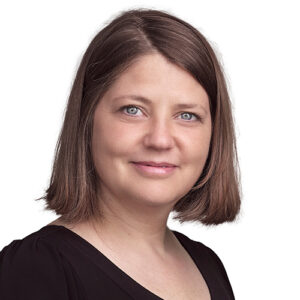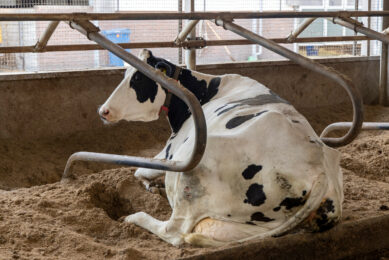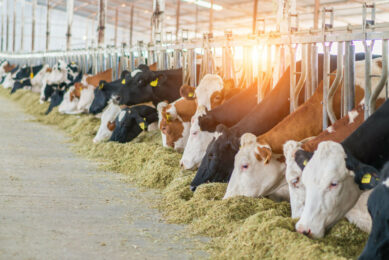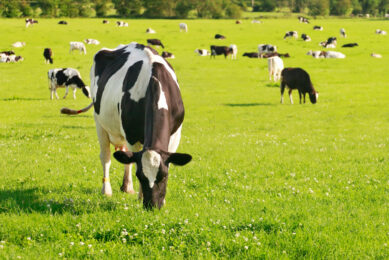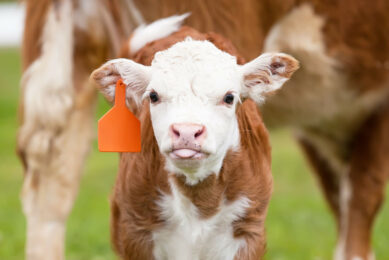Successful Dairy Global seminar at VIV Europe
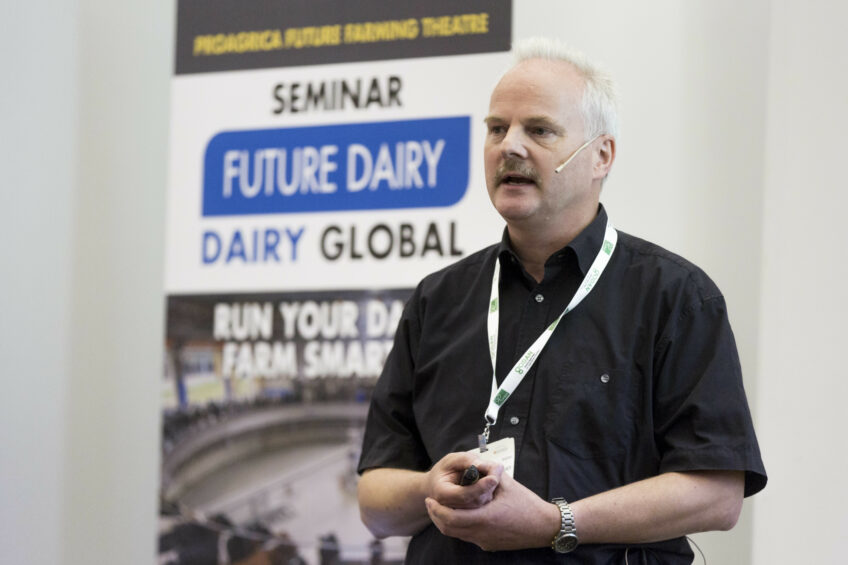
Today’s dairy farmers face a great many challenges both on the farm and off. This is made easier by the introduction of new innovations and advanced technology.
At the recently held VIV Europe in the Netherlands, Proagrica, publisher of Dairy Global, organised the Proagrica Future Farming Theatre Dairy. Here, 3 guest speakers highlighted smart farming technology for dairy farms.
Automated prediction of BCS and body weight
Body condition can have a great influence on the reproduction, health, productivity and longevity of dairy cattle. A cow’s weight and body condition score (BCS) – thinness (1) or fattiness (5) – gives clues to underlying issues, like nutritional deficiency, health problems and even poor herd management. While regular body condition scoring can improve and even prevent health issues from arising, it’s a time-consuming task. At Lely Innovation, Xiangyu Song, research engineer and PhD candidate, is working on solutions. His research interests include identifying vulnerable dairy cows by sensing morphological change using 3D vision technology. Mr Song works in the Sensor and Data Analysis Department. Their goal is to improve animal welfare through sensor monitoring and data analysis. They also aim to improve overall farm sustainability by replacing all labour intensive work with technology.

Using 3D vision technology
Mr Song is working with 3D vision technology to monitor 2 issues: body weight estimation and body condition score. To estimate weight, he placed a 3D vision camera above the cow to capture images of her different body parts, including the spine, hipbones, pin bone and tail head. The distance between the bony landmarks is calculated and put into a multi-linear regression model, said Mr Song. Using a weigh scale measurement for reference, he compared the 2 results. The margin of error was 42kg. “It’s slightly better than other research,” said Mr Song. “But 42kg – that was horrible.” Mr Song decided to focus on what he thinks is a better health indicator: body condition score. “Experts use a clearly defined protocol to score the cow from score 1 to score 5,” said Mr Song. “Score 1 is an extremely thin cow, and score 5 is an extremely fat cow.” “Most of the time, they score so many body parts and give an overall estimation,” he continued.
More longitudinal studies on individual cows
To let 3D vision technology do the work, Lely researchers place 3 cameras around the cow – one on top, one on the side, and one behind. “Those 3 cameras combined can cover all the body parts that are used for body condition score,” said Mr Song. Comparing the 3D vision body condition score with a manual score, result in a sensitivity of 0.72, which means 72% of cows received exactly the same score under both tests. The remainder has an average difference of 0.15 BCS units, said Mr Song. The system is not perfect, but ultimately they would like to use it to conduct longitudinal studies on individual cows to detect and alert farmers to abnormal changes. Mr Song would also like to use 3D vision to identify vulnerable cows by detecting morphological and behavioural change, not to find sick cows, but to determine which ones have the potential to get sick in the future.
Sensor controlled grazing system for cows
Today’s consumers want to purchase milk from cows that have walked in fields and grazed on grass. To prove to them that cows are indeed being grazed, producers are using GPS sensors on collars to track the location of cows. Looking to use the technology to improve production, farmers later asked if sensor-controlled grazing was possible using a virtual fence system they call ‘Graze Guide’. “The idea is quite simple,” said Pieter Hogewerf, a livestock researcher in the Department of Animal Welfare and Health at Wageningen UR in the Netherlands. “The farmer draws on a template a smart farm barrier where the cows are allowed to walk; the cows have a collar attached to their neck that has a GPS sensor inside, and the system communicates with the station and station informs the system of where the cow is allowed to walk.”

Cows learn in just half a day
If the cow comes close to the border it receives a sound signal as a warning. If it ignores the signal it gets an electric shock through the collar. “The idea is that the animal is trained and next time the animal will not walk further, but will react to the sound,” said Mr Hogewerf. The system they used, the BoviGuard system, was tested in 80 x 10 meter strips. The cows were monitored using GPS trackers that had to be charged and put on the cows on a daily basis. This part of the project was quite labour intensive, said Mr Hogewerf. The cows learned how the system worked in just half a day, so very quickly, he said. They also learned that the behaviour of the herd was stronger than the signal. Some escapes were recorded, but in most cases it was the same cow. In narrower spaces, the size of the strip also influenced behaviour. Sensing that they were too close to the fence no matter which way they turned, some cows would just graze in the middle and avoid moving altogether. In a later project, Mr Hogewerf and his team wanted to see if they could separate high-producing cows from low-producing cows to give high-producing cows more grazing space. They found that it was indeed possible. When they were trained to be in groups, said Hogewerf, they stayed that way for 2 whole days even without Graze Guide activated. The next step is to develop a commercial GPS-based system that is both technically and economically feasible in large-scale production.
Implementing new technology
One of the main challenges with developing new technology for dairy farms is implementation, taking the innovation – and the data it generates – from concept to practice. Many farmers struggle with this issue, said Tomas Norton, Division Animal and Human Health Engineering, KU Leuven, Belgium. Mr Norton has been working on lameness technology for the past 10 years.
Lameness is one of the most common issues in dairy cattle. Lameness impacts performance, profitability and general health and welfare. It can be up to 50% prevalent on a dairy farm and cost dairy farmers as much as € 100–200 per cow to manage, according to Mr Norton. To address this issue, Mr Norton and his team at KU Leuven are working on detecting lameness in cows using image analysis.

To detect lameness, farmers typically use head bobbing and the arching of the back, said Norton, but there are more scientific detection methods available as well. Using a camera system to detect back arch, Norton and his team used a gold standard comparison to determine if the animal was lame or not. Using a second algorithm they were able to monitor the evolution of back posture between gait scores 1 and 5. It was a challenge to collect useful data on commercial farms, as farm size slowed data collectors and trained assessors. The second challenge was the actual implementation, so putting the system on farm and validating its performance. It looks straightforward: an image is taken of the cow during milking and data is linked using an RFID tag. “But it’s not as easy as that,” said Mr Norton. While 99% of RFID tags worked, only 88% were recorded, he said. The number of RFID tags linked to videos dropped to 80%, and the number of those that were actually analysed was just 50%. Part of the problem was that it was difficult to capture images of cows as they stood so close together. The next phase of the project will address this challenge. Mr Norton hopes to increase the current figure of 80% scored 5 times a week to 100% scored 10–12 times per week.
4D4F: A community of practice
Mr Norton is involved in another project, 4D4F, which is working to bring technology to farmers in ways they can be implemented. The project involves a consortium of advisors, researchers and farmers that are working to help farmers better utilise the technology and data at their disposal. “There’s a lot of stuff out there, but often times farmers don’t know how to use it in a good way because the information isn’t given to them on how to use it in a good way,” said Norton. The idea of the project is to design a community of practice. Farmers who really want to use the technology and data to learn as much as possible can use the website. All sorts of topics are covered, including metabolic disease, lameness and oestrus. Within the groups, people discuss the available technologies and how they can be used. As the group develops standard operating procedures, farmers benefit as they adopt and benefit from technology earlier.
VIV Europe was held in conjunction with the Global Forum for Innovations in Agriculture (GFIA). Watch the video of Proagrica’s presence on both shows.
Join 13,000+ subscribers
Subscribe to our newsletter to stay updated about all the need-to-know content in the dairy sector, two times a week.


